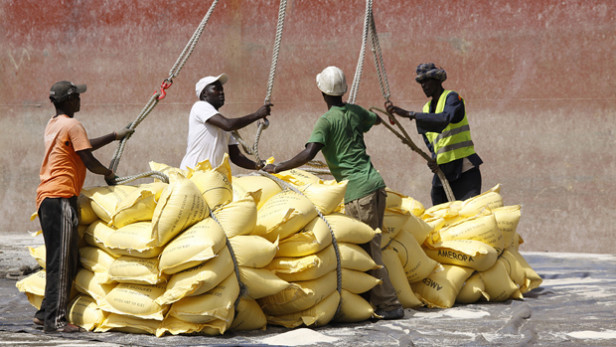 |
| Pew Research Center |
The Afrobarometer asked a public opinion question on China in 2008 but I don't think they've repeated it. In that survey, 47% thought that China "helped somewhat" or "helped a lot" while 30% answered "don't know". For the US, 54% thought we "helped somewhat" or "helped a lot" and 29% didn't have a response.
The BBC regularly does a World Public Opinion poll (PIPA) asking some comparative questions on China, although their coverage of African countries is spotty. Their survey in 2011 had five African countries, Kenya (73% positive), Nigeria (85%), Ghana (72%), Egypt (55%) and South Africa (53%). All had at least 50% positive rating. Another BBC survey in two African countries in 2011 reported a positive view of the impact of China's growth on their country: Kenya (77% positive), Nigeria (82%). In 2013, the PIPA survey showed positive ratings of 78% for China in Nigeria, 68% in Ghana, and a decline to 58% in Kenya. Their 2014 survey showed a rise in favorable public opinion on China in Kenya (65%), stable in Ghana (67%) and a bit of a positive jump for Nigeria (85%).
The Pew Charitable Trust also includes some questions on China/US public opinion.
I think the most recent Pew survey took place in the Spring of 2013. The table from the US/China question is reproduced to the right. On average, 65 percent of Africans viewed China favorably, and 73 percent the US.
Earlier Pew surveys on this topic seem to have only included one country, Kenya. In 2010, 94% of Kenyans surveyed viewed the US favorably and in 2011, 83%. In the table on the right we can see a favorable opinion for the US of 81%, In 2010, 86% of Kenyans surveyed viewed China favorably, and in 2011, this dropped to 71% and in 2013, it rose to 78%.
A survey of African stakeholders carried out in 40 African countries by the OECD for the African Economic Outlook 2011 found that emerging partners such as China were ranked as having a comparative advantage for cooperation in infrastructure, innovation, and even health compared with Africa’s traditional bilateral and multilateral partners. Economist Helmut Reisen, former head of research at the OECD’s Development Center commented: “these results are striking considering all the effort traditional donors have put into these sectors.”











![[GRAPHICS]CHINA-FOREIGN AID-GEOGRAPHICAL DISTRIBUTION (CN)](http://news.xinhuanet.com/english/china/2014-07/10/133474011_14049749104241n.jpg)








.jpg)


